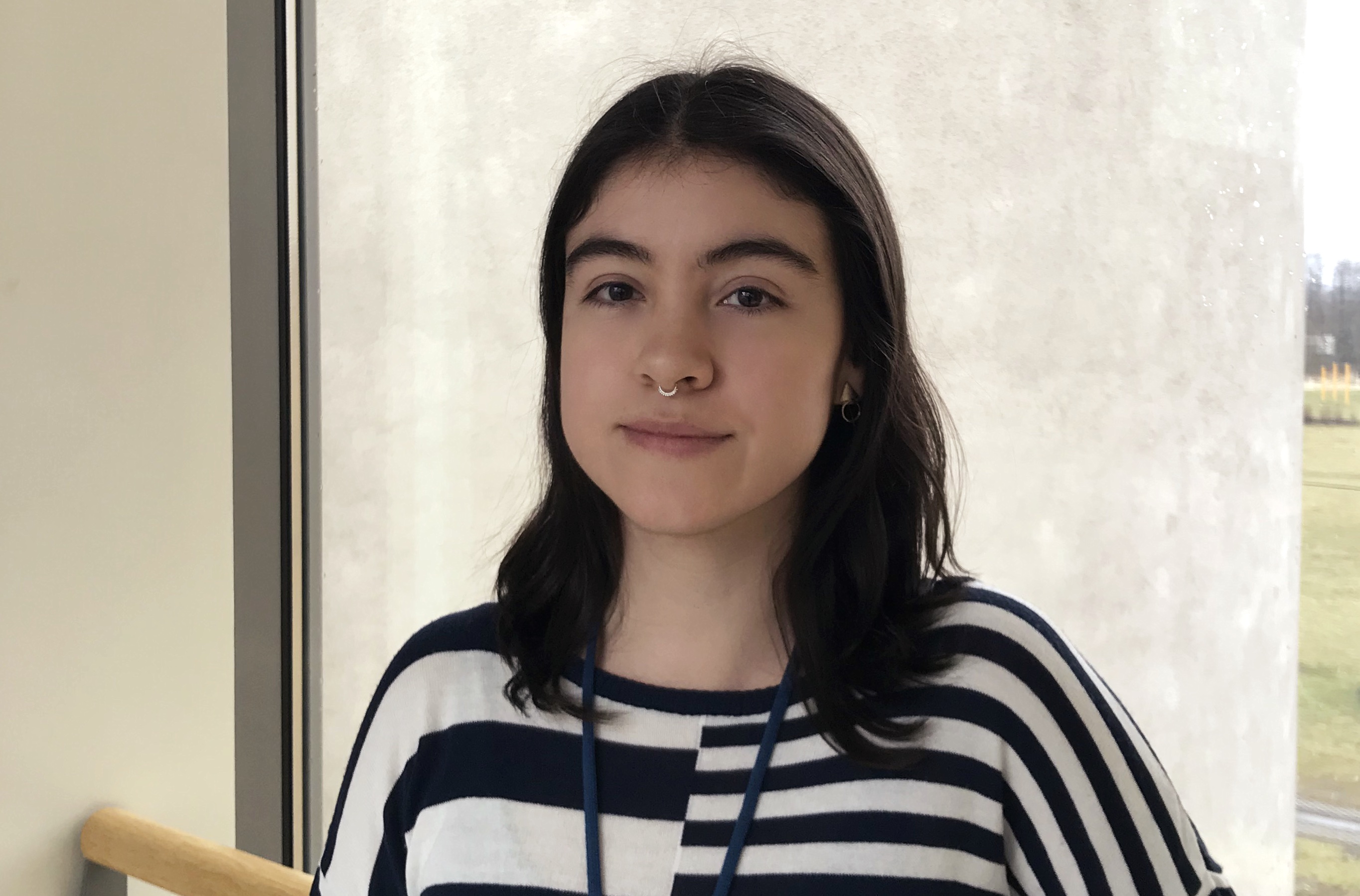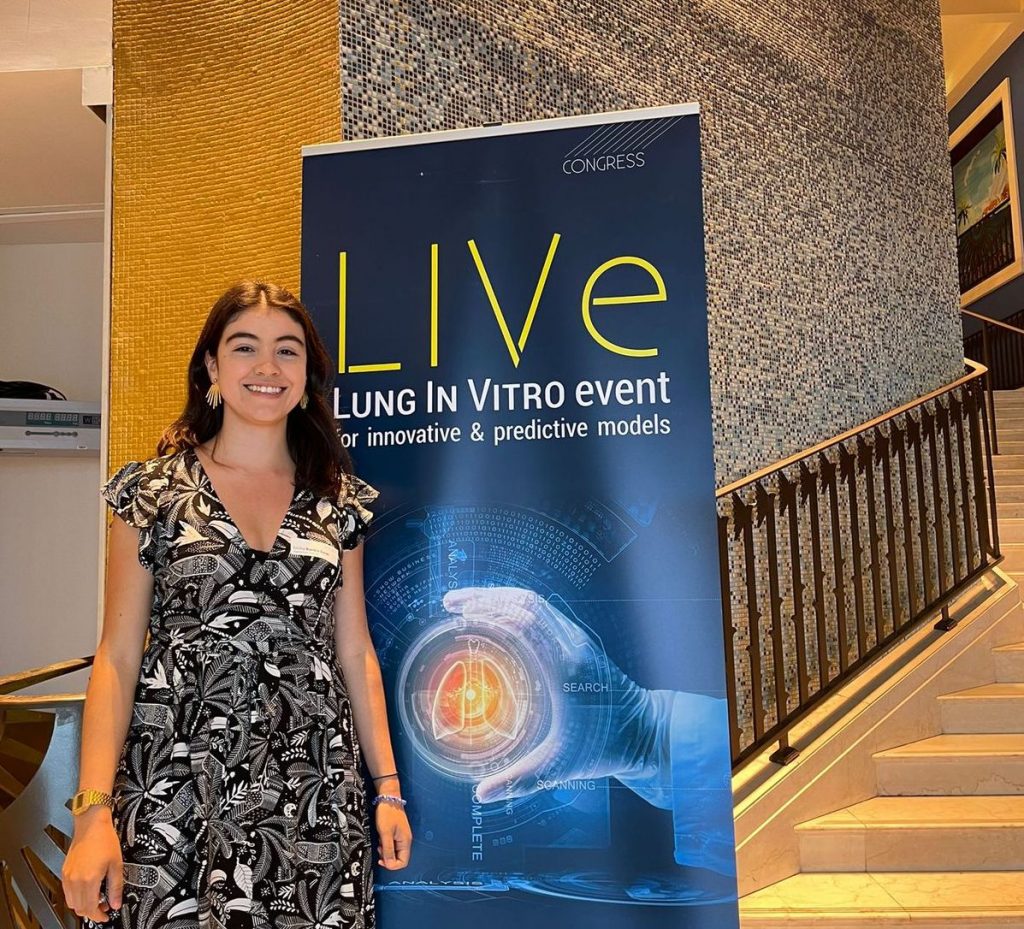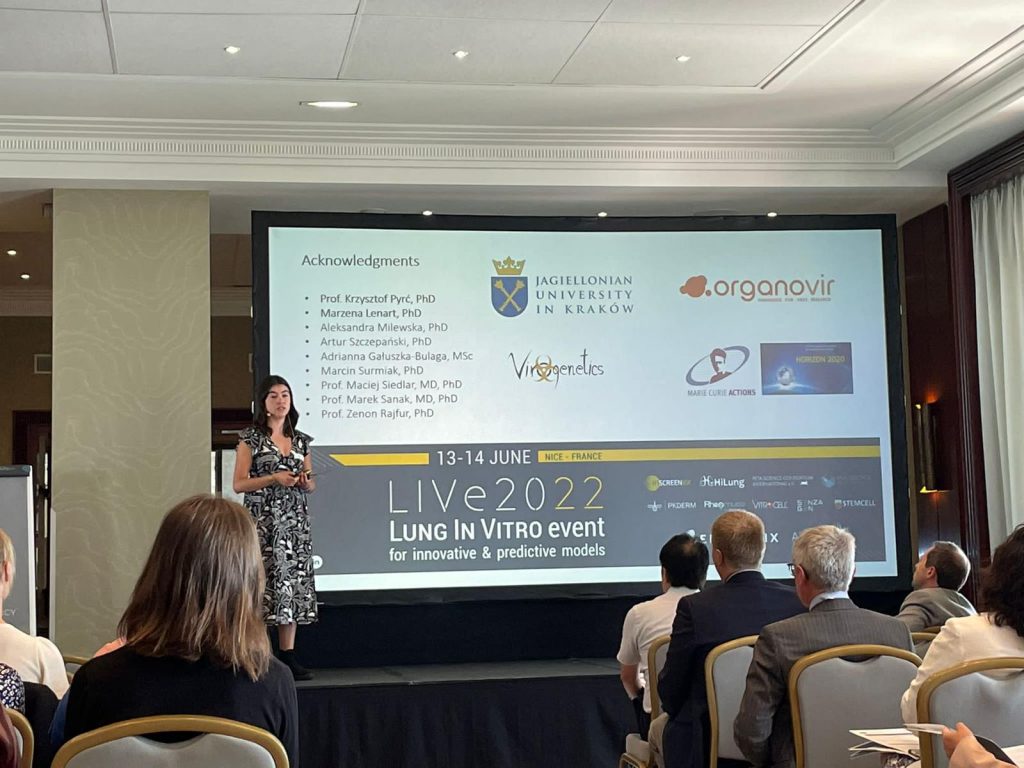
17 Jul In the Spotlight: Emilia Barreto Durán, HAE co-culture expert in the making
Born and raised in the diverse and multicultural city of Bogota, the capital of Colombia, she is one of the thirteen Early Stage Researchers (ESRs) at OrganoVIR. Meet Emilia Barreto Durán, our ESR who is developing a complex co-culture model that resembles the human airway epithelium (HAE) microenvironment for the study of coronavirus infection. Currently based in Krakow, Poland, this year, Emilia has been actively presenting her research during international conferences attended by international experts in the fields of virology and organoids. Here’s all you need to know about our ESR, Emilia!
A Journey That Would Lead to the Studies of Organoids
Before joining OrganoVIR, Emilia initially studied Biology at Los Andes University due to her interest in different organisms and ecosystems. During her studies, however, her passion shifted to human biology, in particular, cellular and molecular biology. Upon obtaining her bachelor’s degree, Emilia developed an interest in human genetics and therefore decided to pursue a master’s studies in the field.
After working at the Javeriana University Institute of Human Genetics for a year, she continued her master’s degree in the Immunobiology and Cellular Biology Research group where she began her research on hematopoietic stem cells and bone marrow microenvironment. There, she worked on the development of a bone morrow organoid prototype as her thesis project.
As time passed during her thesis project, Emilia discovered her passion for research in the field of organoids. She decided then, that after her obtaining her master’s degree, there would be two things that she would be doing. First, she will pursue a PhD studies related to organoids. Second, she wanted to continue her studies in Europe, so that she can discover new cultures, meet new people and experience how scientific research is done in other parts of the world.
The Beginning of her PhD Studies in OrganoVIR
In 2019, Emilia began working and doing her PhD studies under the OrganoVIR training programme. She is based at the Jagiellonian University in Krakow, Poland, under the supervision of Professor Krzysztof Pyrć at ViroGenetics laboratory, in The Malopolska Centre of Biotechnology. Within OrganoVIR, her work focuses on developing a complex co-culture model that resembles the human airway epithelium (HAE) microenvironment for the study of coronavirus infection.
“The PhD project offered by OrganoVIR intrigued me because although I will be developing an airway tissue model – a task that I am familiar with due to my past experience with cell culture – there is a virology component in this project, which is a topic that I had limited experience on” said Emilia about her project in OrganoVIR. Coincidentally, the COVID-19 pandemic happened shortly before her PhD studies began, which gave her the opportunity to work on different projects related to SARS-CoV-2 and to focus her initial research project to study human SARS-CoV-2 infection in the co-culture model.
An Expert in HAE Co-Culture Model in the Making
Earlier this year, Emilia attended the 31st Annual Meeting of the Society for Virology. The conference took place between the 30thof March until the 2nd of April 2022, and was held digitally. This was a particularly exciting opportunity for Emilia, as this would be the first conference at which she presented her PhD project in the form of a poster presentation (titled “The role of macrophages in the course of SARS-CoV-2 infection in the lungs – an ex vivo model”.
A few months later, in June, Emilia journeyed to Nice for an oral presentation (same title as her presentation at the 31st Annual Meeting of the Society of Virology) at LIVe (Lung In Vitro event for innovative and predictive models) 2022. The conference, which took place between the 13th and 14th of June. This was another exciting experience for Emilia because this time, she was able to present her PhD project for the very first time in person! During the event, she was also able to do a lot of networking with researchers and companies that she is very interested in. And of course, she was able to explore the beautiful French coastal city and enjoyed the delicious food and beaches.

Emilia Barreto Durán at the LIVe Event in Nice, France on 13th of June 2022

Emilia Barreto Durán during her presentation at the LIVe Event in Nice, France
She’s Been There, She’s Done That, What is next for Emilia?
Furthermore, Emilia recently submitted a manuscript for the project that she has been working on for the last 3 years. The manuscript, titled ‘The interplay between the airway epithelium and tissue macrophages during the SARS-CoV-2 infection’ is about studying the role of airway macrophages during the SARS-CoV-2 infection using a co-culture model of airway epithelia and human monocyte-derived macrophages. She is hoping to have it published before the end of the year. This publication involved three other postdoctoral researchers from her research group (Marzena Lenart, Aleksandra Milewska, and Artur Szczepanski), five collaborators from other departments at the university, and lastly, her supervisor Professor Krzystztof Pyrc.
Soon, Emilia will be attending the 41st Annual Meeting of the American Society for Virology (also known as ASV 2022, an event coordinated by the American Society for Virology) at Madison, USA, on the 16th – 20th July 2022 to present her poster; The interplay between the airway epithelium and tissue macrophages during the SARS-CoV-2 infection. Joining her is another one of our Early Stage Researcher, Laurensius Kevin Lie, who will be presenting his research in a poster. Her poster focuses on the role of airway macrophages during SARS-CoV-2 infection using a co-culture model of fully differentiated primary human airway epithelium and monocyte-derived macrophages. “I am very excited to go to this conference because it is one of the biggest virology conferences and is a great opportunity to show my work and to get to learn about the research being done on this subject” she said.
To be updated on Emilia’s research activities, follow us on our LinkedIn & Twitter @OrganoVIR.
